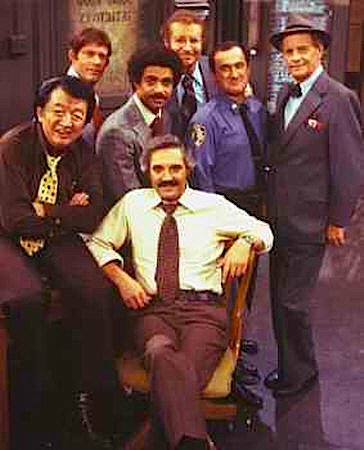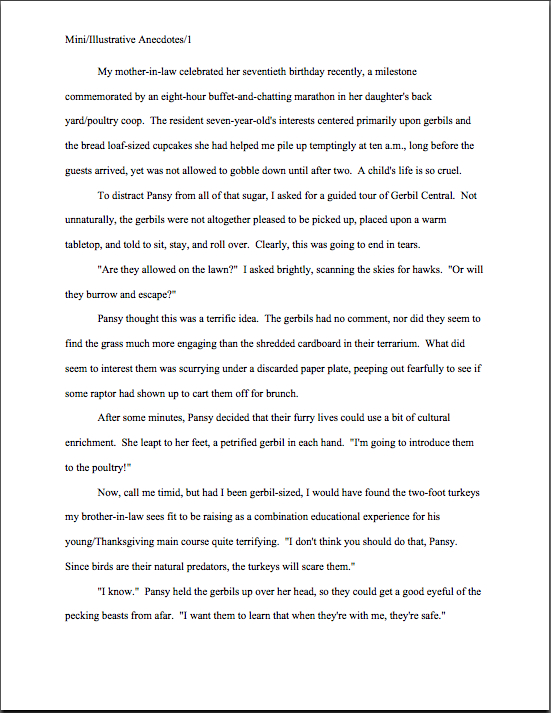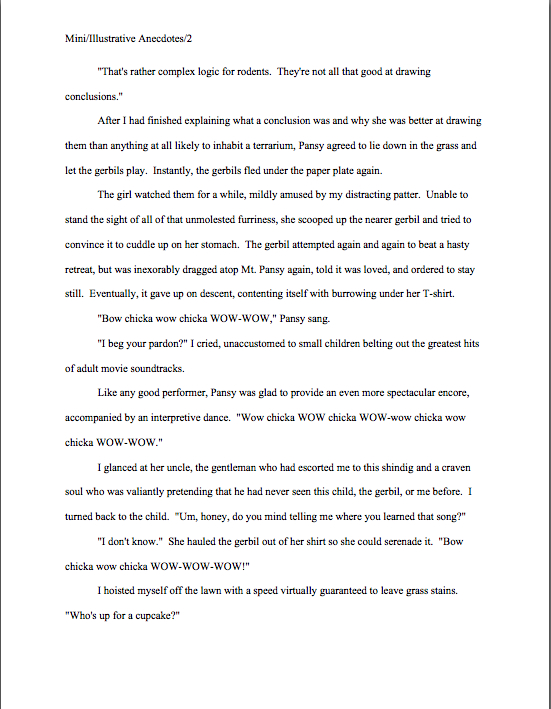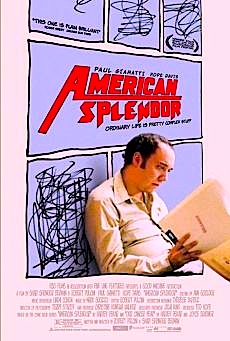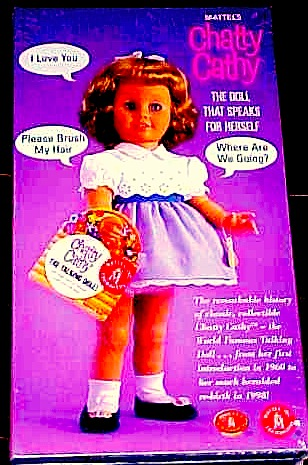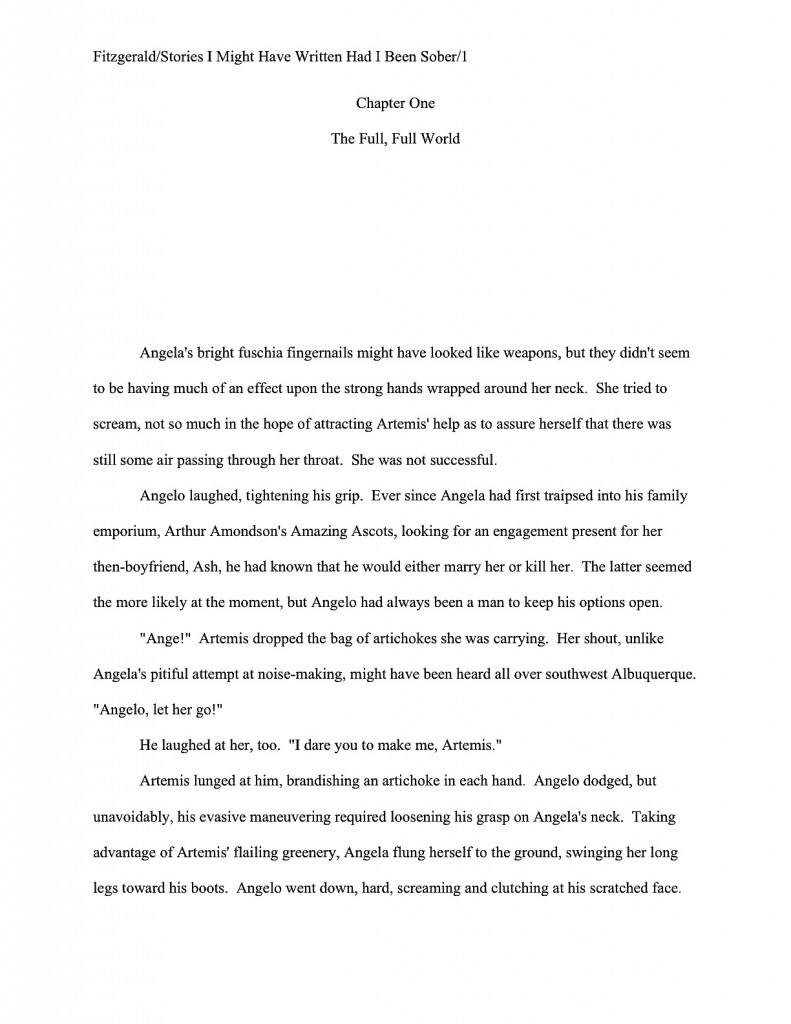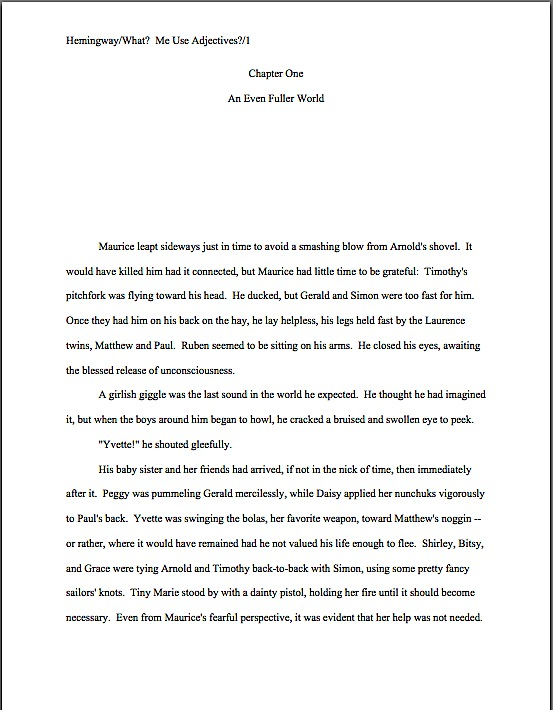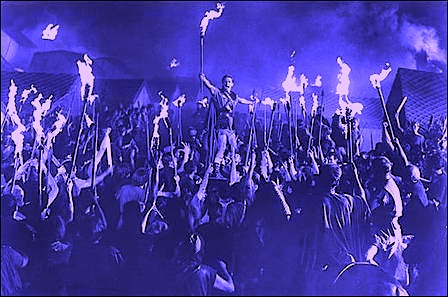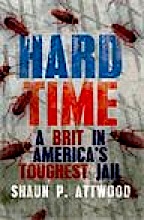
Happy Monday, campers —
Well, I have a bit of good news on the recovery front: I’ve been cleared to type a bit with my right hand again. Before anyone gets too excited, I should add: it’s not an all-clear, by a long shot, but it does mean that I’m moving closer to being able to get back to composing brand-new blog posts again.
However, I typed that last paragraph with both hands. I shall probably be completing this one the same way. And some people say there’s no such thing as progress.
In the spirit of necessary moderation, then, here is today’s revisit to a former post on our current topic. Its holiday references may not be quite apt for August’s annual publishing industry break, but its dialogue-revision suggestions could not be more so for late-summer self-editors. Enjoy!
Did everyone have a nice Fourth of July? In order to teach me a lesson about realistic dialogue, apparently, Someone Up There arranged for me to spend it with a bevy of college professors. Nice people, all, full of charming chat about…
Wait a minute; I’ll bet I can read your minds. 90% of you have already decided that the conversation was stuffy, learned, and generally uninteresting to anyone who doesn’t happen to be conversant with particle physics, James Joyce, and/or the Bourbon Dynasty, haven’t you?
What makes me leap to that (in your case, possibly unwarranted) conclusion? Reading manuscripts for a living, that’s what. Rare is the professorial character who walks into a bar, sits down, and doesn’t immediately start spouting the greatest hits from his latest lecture.
Usually right before he does something spectacularly absent-minded.
Seriously, the prating professor is one of the great unsung stereotypes of the literary world. Just ask any professional reader (agent, editor, contest judge, writing teacher, Millicent the agency screener) who happens to hold an advanced degree herself: it’s bound to be among her pet peeves.
And with good reason: even manuscripts that conscientiously eschew the sulky teenager, the ditsy flight attendant, the corrupt politician, and the unattractive computer genius have been known to embrace the ever-lecturing lecturer with a vim that makes one wonder just how many aspiring writers were bored to death in college. Or high school. Or merely have never had the good fortune to hobnob with doctorate-holders at a social function.
The ugly, ugly result: like many a reader before her, a Millicent with a master’s degree is fated to roll her eyes over unrealistic dialogue.
Why, we were talking about that just the other day, weren’t we? If memory serves — and I’m quite positive that it does — just before I elected to ski down the slippery slope of dissecting all of the problems Hollywood narration can bestow upon a manuscript, I was already perched upon a soapbox, pointing out the pacing, voice, and storytelling dangers inherent to sneaking too much background information or physical description into interview scenes early in a novel submission.
Today, I’m clambering back up on that soapbox. Because, honestly, I’m reading as fast as I can, but I’m just not going to be able to read every manuscript in the English language before it lands upon the always-crowded desk of our old pal Millicent.
No doubt spilling her too-hot latte on her master’s hood, like the ones depicted above. Because, naturally, like everyone who has ever earned an advanced degree, she never takes of her robes, right?
While I’m adjusting my purple velvet doctoral tam — yes, really — allow me to recap a bit for those of you who missed the earlier posts in this series: an interview scene is one where a character, generally the protagonist, obtains information critical to the plot and/or character development from another character, extracted through dialogue. An inefficient interview scene is one in which, as is all too often the case in submissions, the narrator is not a particularly good interviewer. Or thinks that s/he is being clever by not just coming out and demanding the information s/he has ostensibly walked into the scene to collect.
Can you blame a reader for becoming a tad impatient with an interviewer who NEVER ASKS THE LOGICAL FOLLOW-UP QUESTION or JUST SITS THERE WITHOUT ASKING ANYTHING, waiting for the interview subject to spill his guts spontaneously?
If the reader in question happens to be Millicent, her cousin Maury the editorial assistant, or her Aunt Mehitabel the noted contest judge (hey, they’re a literary-minded family; advanced degree-holders, all), the consequences are usually even more serious: if s/he loses interest in the manuscript before her, she tends to stop reading.
In other words, “Next!”
How may a writer avoid this grisly fate? Here’s a good rule of thumb: while not everything that people say in real life makes good dialogue, it’s an excellent idea to make sure that all of your dialogue is in fact something a real person in the real-life equivalent of your fictional situation might CONCEIVABLY say.
And here’s a secondary rule of thumb — a rule of forefinger, so to speak: that goes double for any dialogue that sounds anything remotely like Hollywood narration.
Yes, even if you have heard with your own tiny, shell-like ears a real person speak that way. Present-day Anne here: or perhaps — brace yourself for this one — even if you actually heard a real-life professor once speak like the fictional professor in your book. Just because it might theoretically be possible to produce a recording of someone like your character speaking in that manner does not mean a transcript of it will ring true on the printed page. At least, not to someone personally acquainted with more than one professor.
Or doctor. Or firefighter. As convenient as it might be for writers on a deadline if adopting a profession immediately caused an individual’s speech to drop all personal characteristics and simply become representative of that profession, that just doesn’t happen in real life.
That absent-minded professor you met once notwithstanding.
And don’t even get me started on how often fictional male professors are depicted as having affairs with students (which, over and above being a very tired cliché, would be a very good way to get fired on most U.S. campuses today), female psychiatrists with their patients (ditto), detectives with murder suspects, and so forth. Hackneyed actions are just as likely to strike Millicent as clichéd as jargon-stuffed dialogue, after all.
They are also, just in case anyone doesn’t find the threat of her writing being dismissed as not containing original ideas sufficiently terrifying to eschew the practice, often used as shortcuts, substitutes for honest-to-goodness character development. Introducing stock characters can save a writer a lot of time, after all. (Burly thugs, anyone? Mousy librarians or schoolteachers? Dumb jocks?) But there is more to telling a story enjoyably than telling it rapidly, isn’t there?
The funny thing is, from a professional reader’s perspective, aspiring writers are often STUNNED to hear that such character behavior is clichéd, because, you guessed it, they have actually met real people who acted and spoke that way. I once read a manuscript where the philandering prof spent the opening scene sharing a friendly drink — and talking about Wittgenstein, naturally — with a Native American spouting earth-worshiping wisdom, a sympathetic bartender dispensing amateur psychology, a burnt-out teacher who had just had his faith restored by a single student’s abrupt progress, and a corrupt — wait for it — politician.
When I gently suggested to the author that perhaps the reader might have seen these characters before someplace, and that he might want to consider individuating them more, he acted as though I’d just recommended that he feed his left foot to a school of piranha. Since he had never seen precisely that array of characters together on the page, it had never occurred to him that these were stock characters, more representatives of their professions than fleshed-out characters.
Okay, I need to rest my hand now; back to the post already in progress.
Remember, please, that dialogue is not automatically realistic just because a real person has at some point uttered it. As I have been pointing out none too gently throughout this series, real human beings tend not to tell one another things they already know — except, of course, about the weather (“Some heavy rains we’ve been having, eh?”), the relative progress sports teams (“How about them Red Sox?”), and tidbits from the latest celebrity death scandal (in the interests of moving this along, I’ll spare you all my eulogistic renditions of Ben and I’ll Be There, despite the fact that they happen to fall smack in the middle of my flute-like soprano range).
In print, such iterations of mundane issues are notably primarily for their soporific value. (Translation: zzzzz.) As storytelling, such homely gems just tend to slow down the action of the scene.
Interestingly enough, adhering to these few rules while revising almost always results in trimming interview scenes substantially. This is particularly true for interviews that provide the opening conflict in novels, where Hollywood narration and dialogue stuffed to the gills with visual clues about characters tend to congregate — and thus are likely to do the most damage at submission time.
I sense some shifting in seats out there. “Yeah, yeah,” the impatient are murmuring. “You already yammered at us about this last week, Anne. Cut to the chase, already.”
Funny, that last sentence is precisely what Millicent is often heard muttering over interview scenes. Without the last week part, that is.
But you have a legitimate point, impatient mutterers. However, in my earlier discussion of the phenomenon, I left out one of the primary reasons Millicent tends to have that particular knee-jerk reaction: if the first couple of pages of text are a bit heavy-handed, agency screeners, contest judges, and other professional readers usually leap to the conclusion that the ENTIRE text reads the same way.
An assumption, as you no doubt have already guessed, that conveniently enables Millie and her ilk to reject the descriptively front-loaded submission immediately and move swiftly on to the next.
I have seen a LOT of good manuscripts done in by this tendency. Because this is such a common problem, as an editor, one of the first places I look to trim is that first scene — which, as I mentioned a few days back, is very, very frequently an interview scene. My editing antennae perk up particularly strongly if the opening scene relies far more heavily upon dialogue than narration.
Why, all of you interview-writers ask in trembling tone? Well, see for yourself, in this piece of purple-tinted prose:
“Don’t you go rolling those large hazel eyes at me, Thelma,” Marcel warned. “It hasn’t worked on me since our days in the chorus twelve years ago, in that bizarre road company of Auntie Mame. And you can save the eyelash fluttering, too. You’re wearing too much mascara, anyway.”
Thelma laughed. “That’s a fine criticism, coming from a man wearing false eyelashes. Just because you’re a drag queen doesn’t mean you can’t dress with some taste. I mean, bright red lipstick with a pale lavender sweater? Please.”
“What about you?” Marcel shot back. “In your puce bathrobe with purple magnolias dotted all over it still, at this time of day!”
Thelma walked around him, to check that the seams on his stockings were straight. “Because you’re my best friend in the world, I’m going to be absolutely honest with you: you’re too heavy-set for a miniskirt now, darling. Certainly if you’re not going to shave your legs. What are you now, forty-five and a size twenty-four?”
Marcel smoothed down his Technicolor orange wig. “At least at six feet, I’m tall enough to wear Armani with style. Your cramped five foot three wouldn’t even be visible on a catwalk.”
Admittedly, the banter here is kind of fun, but a judicious mixture of dialogue and narration would convey the necessary information less clumsily, without rendering the dialogue implausible. Try this moderately snipped version on for size:
Thelma rolled her large hazel eyes. Even draped in a ratty puce bathrobe that barely covered her short, round form, she carried herself like the Queen of the Nile.
Unfortunately for her dignity, her icy hauteur act had grown old for Marcel twelve years ago, three weeks into their joint chorus gig in that chronically under-attended road tour of Auntie Mame. “You can save the eyelash fluttering, sweetheart. You’re wearing too much mascara, anyway.”
Thelma laughed. “You’re a fine one to talk taste. Bright red lipstick with a pale lavender sweater? Please.”
His thick, black false eyelashes hit where his pre-plucked eyebrow had originally been; his current fanciful impression of an eyebrow swooped a good four inches higher, threatening to merge with his Technicolor orange wig. Even for a career drag queen, his moue of surprise was a bit overdone. “Will you be getting dressed today, darling?” he asked brightly. “Or should I just get you another bottle of gin, to complete your Tallulah Bankhead impression?”
Thelma walked around him, to check that the seams on his stockings were straight. He was getting too heavy to wear fishnets every night. Still, not bad gams, for a forty-five-year-old. “If you insist upon wearing a miniskirt, my sweet, you might want to consider shaving your legs.”
Same information, but more naturally presented, right? By having the narration take over the bulk of the descriptive burden, a rather amusing narrative voice has emerged, conveying a point of view distinct from either Marcel or Thelma’s.
I can hear my mutterers murmuring again, can I not? “Okay, so the second version has a stronger narrative voice,” they concede. “But even so, all of that physical description makes the scene drag a bit, doesn’t it?”
Yes, and that brings me back to my closing question from earlier in this series: other than the fact that television and movies have accustomed us all to having an instantaneous picture in our heads of a story’s protagonist, is there a reason that a narrative must include a photographic-level description of a character the instant s/he appears in the book?
I’ll go ahead and answer that one myself: no, there isn’t. TV and movies have simply accustomed us to the notion that our first impressions of any character should be visual, just as in radio, we first hear him speak.
In a visual medium, there’s plenty of reason to give the audience a snapshot, but books are not visual media; narratives can appeal to all of the senses. So the next time you sit down to ponder revising the first few pages of a novel, it’s worth investing a moment or two in pondering the possibility that your opening scene may actually read better without a meticulous up-front description of every character in the scene, his backstory, and where he bought his clothes. Or even how he got there.
Consider it, perhaps, while sitting with a hard copy of your first few pages in your hand. Is there backstory or physical description in your opening dialogue that could come more gradually, later in the chapter — or even later in the book?
Or – and this is a possibility that occurs frequently to professional readers of interview scenes, let me tell you — is that Hollywood narration or description-laced dialogue the book’s way of telling us that perhaps the book opens at the wrong part of the story?
I hope that didn’t make anyone out there faint; my kind of doctorate doesn’t allow me to resuscitate the fallen with impunity.
Might, for instance, we learn more about Thelma and Marcel in a more graceful manner if, instead of beginning the novel with the dialogue above, it opened with a short prologue showing them twelve years ago, bright-eyed, innocent, and slim — and then jumped ahead to this scene, to show how they and their relationship have changed?
Dramatic, eh? One might even say character-revealing.
Of course, front-loading an opening scene with physical description is not necessarily an indicator of a structural problem. I suspect that often, writers who use this technique as a means of introducing description are driven primarily by a panicked sense that the reader must be told what the characters look like the instant they appear in the text — combined with a recollection that their high school writing teachers said that extensive physical descriptions later in the narrative confuse readers who have already formed a mental image of the character. So they’re sort of trying to, you know, sneak the physical description in when the reader isn’t looking, so to speak, in that opening scene.
Trust me, a professional reader is ALWAYS looking. It’s her job.
Looking specifically, in the case of an agency screener or editorial assistant plugging through a mountain of submissions, for a reason to reject the manuscript in front of her. By avoiding the common twin traps of overloading the first scene with crammed-in backstory and physical description, a manuscript stands a much greater chance of cajoling Millicent into reading on to scene #2.
And we all want that, don’t we?
I sense more impatient shifting in the peanut gallery. “Um, Anne?” these fed-up folks say. “Isn’t this the same point you made above? I get it, already: using dialogue to have characters describe one another is a species of Hollywood narration, and therefore to be eschewed. Have you considered that there might not be a reason to keep telling us this?”
Ah, but you’re assuming that I’ve already made my primary point. Far from it; like other doctors, we book medicos bill for our advice by the hour. Relax: we’ve still got some time left in our session.
So here comes some professional wisdom: after a screener has had the privilege of scanning a thousand manuscripts or so, it becomes pretty clear that many aspiring writers don’t really understand what the writing gurus mean when they urge us all to open with a hook.
A hook, for those of you new to the term, is a grabber located within the first paragraph of a story or book — preferably within the first sentence, according to some writing teachers — that so intrigues the reader that s/he is instantly sucked into the story. (This is not to be confused with a Hollywood hook, a one- or two-sentence pitch for a script or book. See the so-named category on the list at right, if you are curious about the care and feeding of the latter.)
Often, aspiring writers will interpret the advice to open with a hook to mean that a storyline must open with violent or even bloody action, a mystery that the reader will want to solve, or a conflict-ridden scene. While admittedly Millicent sees a whole lot of manuscripts that open with a bang (with or without gushes of blood), all of these strategic choices can indeed work, if handled well.
Although let me tell you, they are such common choices that it’s a downright relief to most professional readers when a writer elects to open with a powerful visual or sensual image instead. Hint, hint. Especially if that strong opening image leads into a scene packed with character- or situation-revealing conflict.
What’s even more common than the submission that kicks off with conflict? An beginning that insists that the reader must be 100% up to speed on the plot and characters by the bottom of page 1 — or page 5 at the latest.
Again, that vexing question rears its ugly head: is this strictly necessary?
Brace yourselves, because I’m about to suggest a revision technique that may shock some of you: just as an experiment, try removing the first scene of your book.
Not permanently, mind you — and certainly not without having made a backup copy of the original first, in case you decide after mature and careful consideration that what I’m about to suggest next was a stupid idea: cut it just long enough to find out whether the story would make sense to the reader without it. If it can fly that way, consider cutting the scene entirely and starting fresh slightly later in the plot.
I’m quite serious about this — you wouldn’t believe how many good manuscripts don’t actually begin until a couple of scenes in, or that allow absolutely gorgeous opening sentences or images to languish on page 4. Or page 15.
Or, if I’m honest about it, the beginning of Chapter Three. Which, in a Frankenstein manuscript, may well have originally been the opening of Chapter One, before the writer heard that speech at a conference about hooks and decided to front-load the manuscript.
Yes, I know: what I’m suggesting is potentially pretty painful; as we discussed in the GETTING GOOD AT ACCEPTING FEEDBACK series (still conveniently accessible in the category list at right, in case you missed it), many, many aspiring writers regard the approach of the reviser’s pen with every bit of the fear and loathing that the published writer feels for governmental censorship. But it’s just a fact that when we’re first constructing a narrative, we writers are not always right about where the story should begin and end.
If you don’t believe this, I can only suggest that you take a gander at THE BROTHERS KARAMAZOV, an undoubted masterpiece that could have lost most of the first 200 pages without bugging the reader much at all.
(That’s a professional opinion, by the way. One of the great fringe benefits of having walls lined with diplomas from prestigious institutions is the ability make sweeping judgments like that about classics without fear of sounding ignorant. While I’m at it, allow me to add: THE TAMING OF THE SHREW is a stupid play, and I found A TALE OF TWO CITIES far-fetched. So there.)
Try to keep an open mind while you’re revising. Be willing to consider the possibility that your story might be more effective — and hook the reader better — if you began it at a different point. Or at least do a little field testing to rule it out.
Believe me, you’ll sleep better at night if you do.
How do I know this, you ask? Because now, I’ve planted the doubt in your mind. As much as you might pooh-pooh the idea that all or part of your opening could be snipped away without fundamental harm to the storyline, you can’t be ABSOLUTELY sure that it’s a stupid suggestion without going back over it pretty rigorously, can you?
You’re welcome — and I mean that very seriously, because an aspiring writer who is willing to examine and reexamine her writing before she submits it is going to have a much, much easier time coping with editorial feedback later on in the process.
Trust me; I’m a doctor. That diploma over there says so.
By the way, what the group of professors were discussing when I walked into the Fourth of July party was Charles Dickens’ BLEAK HOUSE. After I laughed and told them that this was precisely the type of conversation people who didn’t know any professors would write for them, one of them said, “Yes, but the funny thing is, this is a conversation we normally wouldn’t have outside a Dickens conference.”
I rest my case. Keep up the good work!
